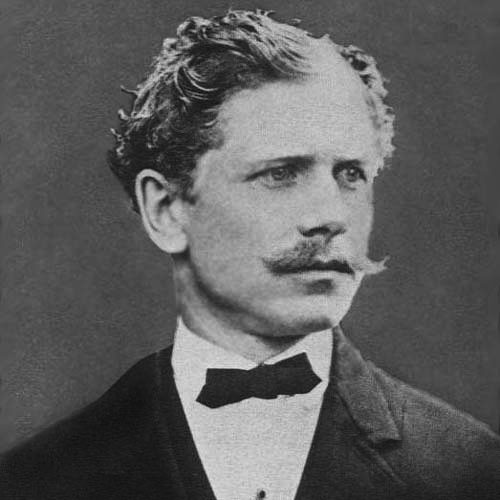25 Ambrose Bierce (1842–circa 1914)
Amy Berke; Robert Bleil; and Jordan Cofer

Ambrose Bierce was born in a rural area of Meigs County, Ohio, in 1842. Although poor, Bierce’s father owned a collection of books and instilled in his son an appreciation for the written word. Bierce left home in his teens, eager to make his way in the world, living with relatives and attempting formal education. He eventually joined the Union Army at the onset of the Civil War, serving in the 9th Indiana Infantry Regiment, eventually as a lieutenant. He survived some of the most brutal battles of the Civil War, including Shiloh and Chickamauga. After the war, Bierce settled out West in San Francisco, married, and had three children. Bierce began to write and publish a number of short stories while working at several well-known West Coast literary magazines. In 1892, he published Tales of Soldiers and Civilians, a collection of his war stories, many of which are considered his best works today. After suffering a number of personal losses, including the death of two of his children and a divorce from his wife, who died soon thereafter, Bierce left the States to travel to Mexico. While many fictitious stories relaying the events of his last days persist, there is no conclusive proof of his fate. He was never heard from again after late 1913.
Bierce was an iconoclast, a writer who was fiercely independent and who, using the power of his pen, cynically derided current trends in literature. He was sometimes referred to as “Bitter Bierce,” and his Devil’s Dictionary (1911), compiled during most of his writing career, offered dark, satiric definitions of common words. While Bierce was praised by William Dean Howells as an important new writer on the literary scene in the 1890s, Bierce in his journalistic pieces for West Coast literary magazines could be brutal in his assessment of Howells and James, mocking them for their views on Realism, a mode which he considered too tame to tackle the breadth and depth of human experience. Not surprisingly, it is difficult to categorize Bierce’s work, particularly his war stories. His fiction is aligned, at least in principle, with Realist features such as the depiction of life-like characters and authentic details of setting. However, in Bierce’s war stories, the landscape often transforms beyond the objectively realistic, as Bierce probes the subjective reality of those who experience the nightmarish events most traumatically; the result is that the story moves into the realm of the fantastic or the grotesque, particularly in two of his most famous war stories, “An Occurrence at Owl Creek Bridge” and “Chickamauga,” where Bierce lays bare the human cost of war. In “Owl Creek Bridge” and “Chickamauga,” the central civilian characters, a Southern planter and a young Southern boy, respectively, both seem to believe that they can participate in or “play” at war and remain unscathed. Whether as a result of impaired senses, naïvete, inexperience, or cultural conditioning, the characters are unable to read accurately the horror of war or to comprehend their own personal peril in “playing” war until, that is, the horror of the moment is brought home to them: facing their own imminent death or the brutal death of a loved one.
An iconoclast is a highly independent non-conformist who may rebel against or criticize the status quo.

